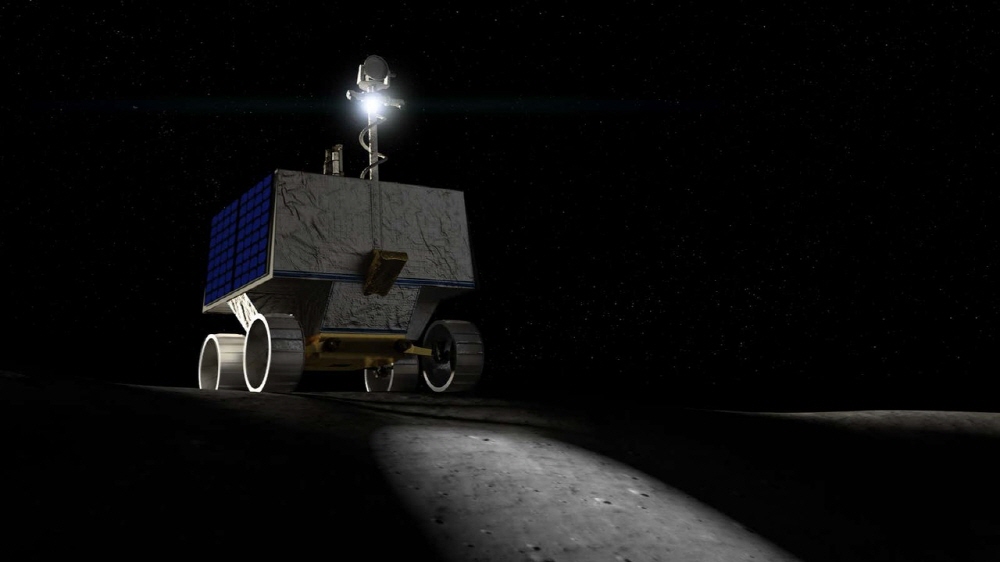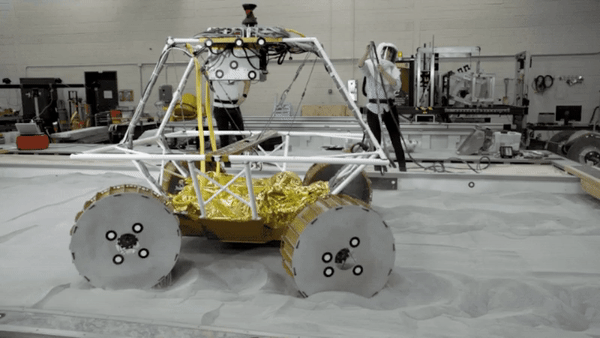
The VIPER is NASA’s next lunar probe, the size of a golf cart and powerful equipment, and is expected to help improve understanding of how water is on the moon. Viper is expected to land on the moon in late 2023.
The Volatiles Investigating Polar Exploration Rover (Volatiles Investigating Polar Exploration Rover) will map the locations and amounts of icy water, such as under topsoil and inside dark craters, in the Antarctic region of the Moon over 100 days. Viper will help us understand the origin and distribution of water on the Moon and prepare it for resource gathering on the Moon, 400,000 kilometers from Earth. This resource could be used to send astronauts into more distant space, including Mars.
As part of NASA’s Artemis program, Viper aims to explore sustainable exploration techniques, such as on the moon. The big goal is to know where there is water on the moon and how to use any of it. Pittsburgh-based Astrobotic is responsible for launching the Viper and shipping it. According to NASA, the mission’s development cost is $43,350, of which $22,650 is in contract with Astrobotic.

The Viper is a four-wheeled vehicle with a height of 2.5 m, a width of 1.5 m, and solar power as a power source. In lunar exploration, headlights are mounted from the beginning to investigate the shadowed parts of the moon that have not been exposed to the sun for billions of years. For this reason, the Viper must be able to withstand extreme climatic variations in external temperature, and must be able to withstand the microscopic topsoil of the moon and strong cosmic rays.
It was confirmed that there is some water in the month of 2020. It is said that there is always water in the dark part called the cold trap where the direct sunlight hits. There are many such cold traps in impact craters caused by meteorite impacts, making them important targets for exploration.
One of the highlights of the Viper is the special wheel and suspension mechanism. This allows it to descend on steep slopes and into deep craters that can be traversed over various topsoils. During normal operation, the viper moves over various topsoils. The Viper can lift its wheels independently, almost like legs, on loose soil, pushing the topsoil with its legs. Therefore, it is possible to exercise such as swimming, and soft soil advance is possible.
The maximum speed of the viper is 0.8 km/h, and it moves 4 to 8 m at a time according to the earth control instructions. Viper sends data back to Earth using NASA’s Deep Space Network X-Band System. The two-way communication between the moon and the earth is simple, sending a signal from the earth to the moon takes only 2 seconds. On the other hand, Curiosity and Perseverance, which went to Mars, take about 20 minutes to send a signal to Earth.
There are 4 measuring instruments used by the Viper. Mass Spectrometer Observing Lunar Operations (Msolo) mass spectrometer for observing lunar activity, Near Infrared Volatiles Spectrometer System (NIRVSS) near-infrared volatile matter analysis system, Neutron Spectrometer System (NSS) neutron spectrometer system, The Regolith and Ice Drill for Exploring New Terrains (TRIDENT) ) is a topsoil and ice drill for terrain exploration. TRIDENT is a 1m long drill.
If all goes well, the Viper moon launch could be a year or so earlier than the astronauts’ arrival on the moon under the Artemis program in November 2023.


















Add comment